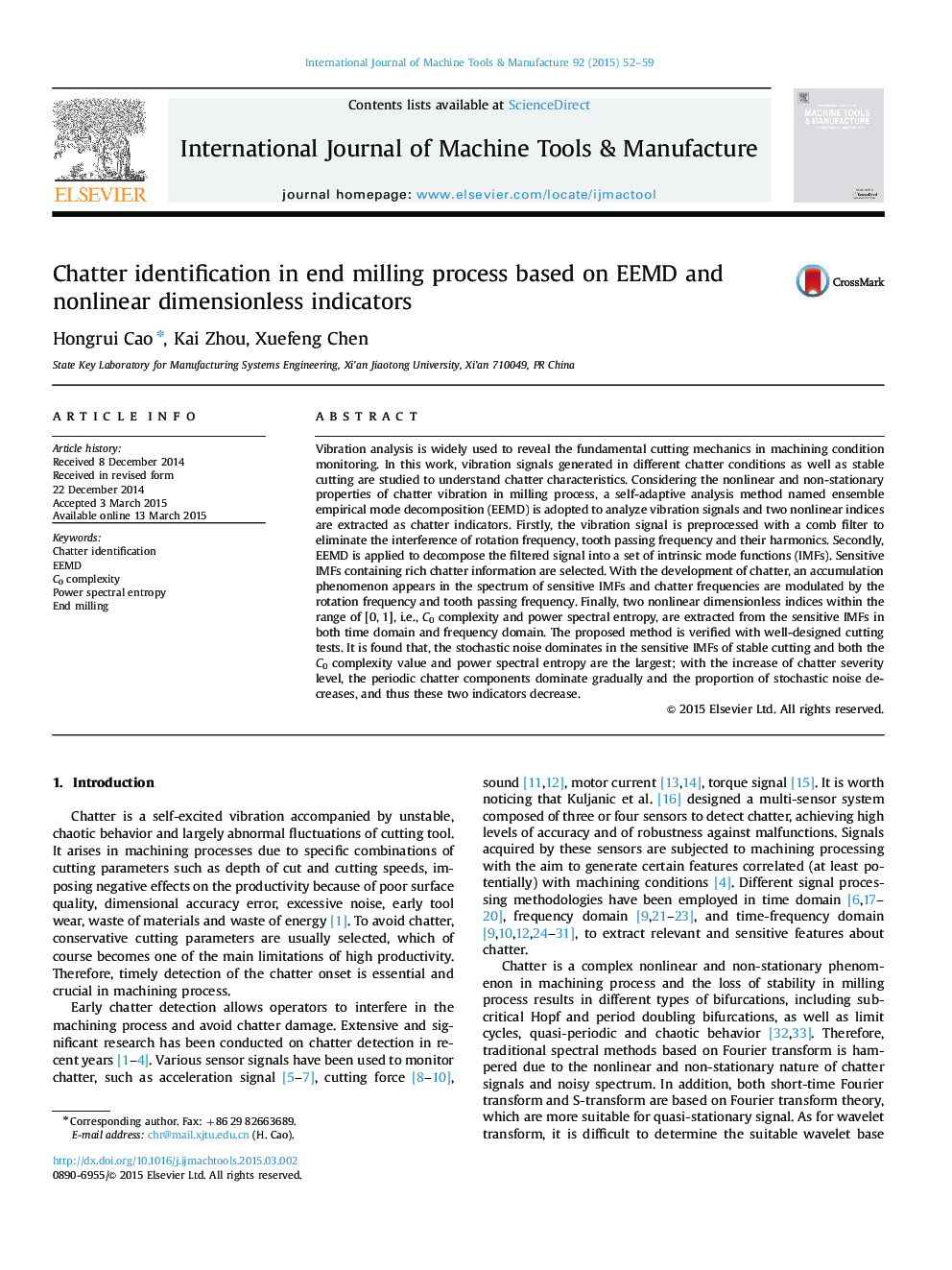| Article ID | Journal | Published Year | Pages | File Type |
|---|---|---|---|---|
| 780703 | International Journal of Machine Tools and Manufacture | 2015 | 8 Pages |
•An effective chatter identification method is presented for end milling process.•The self-adaptive decomposition method EEMD is more suitable for chatter analysis.•Two nonlinear dimensionless indicators are calculated for chatter identification.•The indicators are independent of cutting parameters for chatter identification.
Vibration analysis is widely used to reveal the fundamental cutting mechanics in machining condition monitoring. In this work, vibration signals generated in different chatter conditions as well as stable cutting are studied to understand chatter characteristics. Considering the nonlinear and non-stationary properties of chatter vibration in milling process, a self-adaptive analysis method named ensemble empirical mode decomposition (EEMD) is adopted to analyze vibration signals and two nonlinear indices are extracted as chatter indicators. Firstly, the vibration signal is preprocessed with a comb filter to eliminate the interference of rotation frequency, tooth passing frequency and their harmonics. Secondly, EEMD is applied to decompose the filtered signal into a set of intrinsic mode functions (IMFs). Sensitive IMFs containing rich chatter information are selected. With the development of chatter, an accumulation phenomenon appears in the spectrum of sensitive IMFs and chatter frequencies are modulated by the rotation frequency and tooth passing frequency. Finally, two nonlinear dimensionless indices within the range of [0, 1], i.e., C0 complexity and power spectral entropy, are extracted from the sensitive IMFs in both time domain and frequency domain. The proposed method is verified with well-designed cutting tests. It is found that, the stochastic noise dominates in the sensitive IMFs of stable cutting and both the C0 complexity value and power spectral entropy are the largest; with the increase of chatter severity level, the periodic chatter components dominate gradually and the proportion of stochastic noise decreases, and thus these two indicators decrease.
